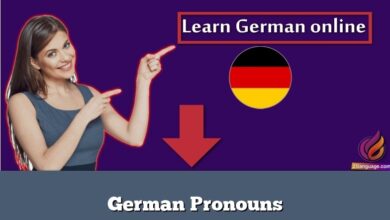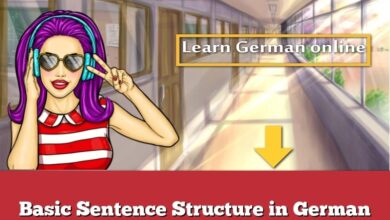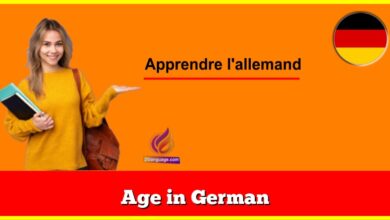Grammar in Context: Learning German through Dialogues

Grammar in Context: Learning German through Dialogues.Grammar in Context: Learning German through Dialogues” with English translations would present dialogues in German, followed by their English translations. This approach helps learners to understand the practical use of grammar in everyday conversations. Here’s an example of how such content might be structured:
Chapter: Daily Life and Routine
- Dialogue: Describing a Typical Day
- German Dialogue:
- A: Guten Morgen, Anna! Wie war dein Wochenende?
- B: Es war toll! Ich habe am Samstag mit Freunden gegrillt und am Sonntag habe ich mich ausgeruht.
- A: Das klingt entspannend. Was machst du normalerweise unter der Woche?
- B: Unter der Woche stehe ich früh auf, gehe zur Arbeit und mache abends Sport. Und du?
- A: Ähnlich. Ich arbeite, lerne Deutsch und lese gerne vor dem Schlafengehen.
- English Translation:
- A: Good morning, Anna! How was your weekend?
- B: It was great! I had a barbecue with friends on Saturday and rested on Sunday.
- A: That sounds relaxing. What do you usually do during the week?
- B: During the week, I wake up early, go to work, and exercise in the evening. And you?
- A: Similar. I work, learn German, and like to read before going to bed.
- German Dialogue:
- Grammar Points:
- Use of past tense (Perfekt) to describe weekend activities.
- Present tense to talk about regular weekday routines.
- Modal verbs (“mögen” – to like) in present tense.
- Exercises and Practice:
- Rewrite the dialogue with your own weekend and weekday routines.
- Practice using the past tense with your activities.
Each chapter of the book would follow this structure, presenting dialogues that cover various themes and situations. The dialogues would be designed to introduce and practice specific grammar points in a context that is easy to understand and relate to, thereby enhancing the learning experience.
Examples
Certainly! Here’s an example dialogue from “Grammar in Context: Learning German through Dialogues,” presented in a table format with the German text and its English translation side by side:
| German Dialogue | English Translation |
|---|---|
| A: Guten Tag! Ich suche die Bibliothek. Können Sie mir helfen? | A: Good day! I am looking for the library. Can you help me? |
| B: Ja, natürlich. Gehen Sie diese Straße entlang bis zur Kreuzung. | B: Yes, of course. Go along this street to the intersection. |
| A: Muss ich links oder rechts abbiegen? | A: Should I turn left or right? |
| B: Biegen Sie rechts ab und die Bibliothek ist auf Ihrer Linken. | B: Turn right and the library will be on your left. |
| A: Vielen Dank! Wie lange dauert es zu Fuß? | A: Thank you! How long does it take on foot? |
| B: Nur etwa fünf Minuten. Sie können es nicht verfehlen. | B: Only about five minutes. You can’t miss it. |
| A: Perfekt, vielen Dank für Ihre Hilfe! | A: Perfect, thank you very much for your help! |
This example demonstrates how the book might use everyday dialogues to teach the German language in a practical context, with a focus on directions and polite requests. This method helps learners understand and apply the grammar and vocabulary in real-life situations.





























